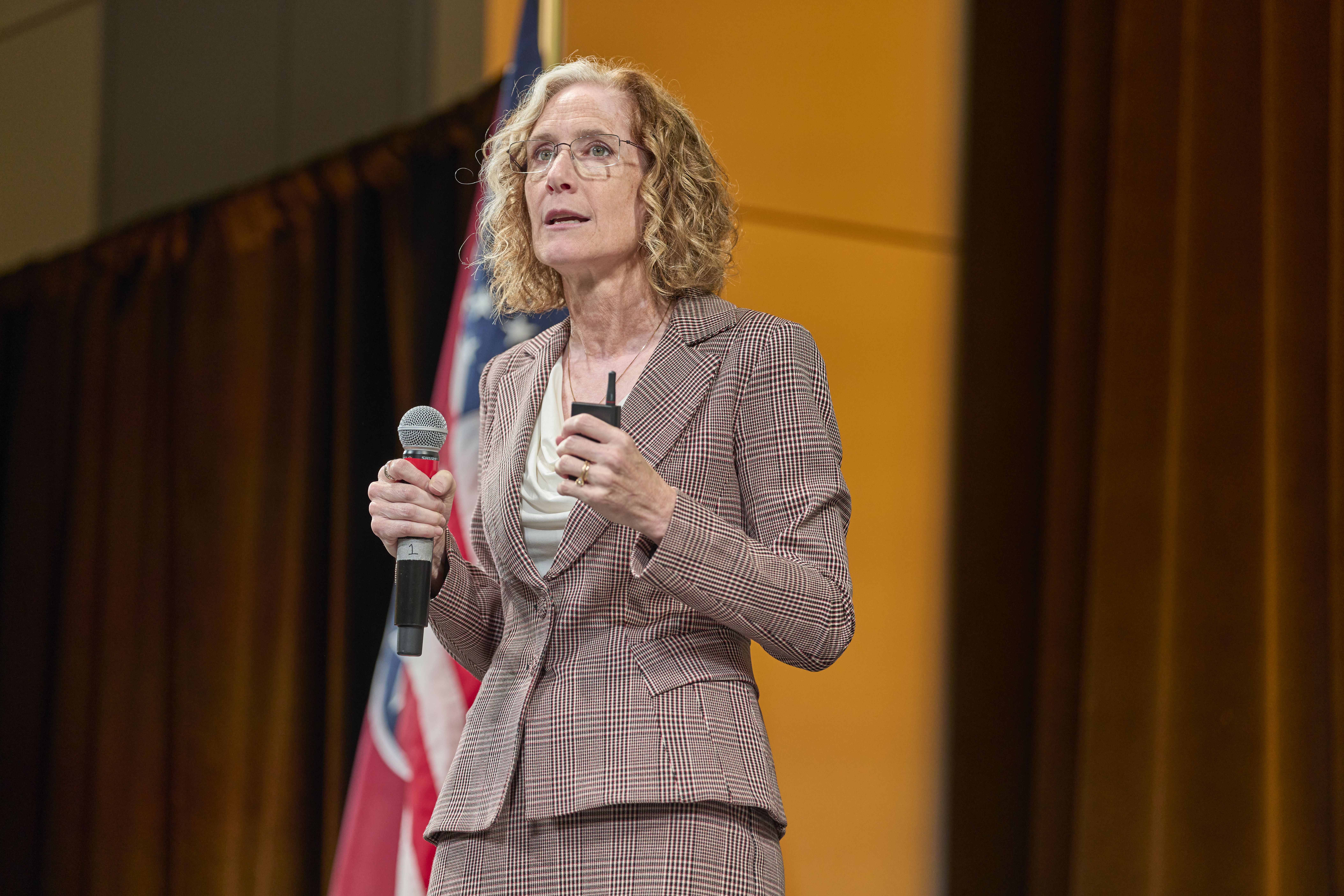Overview
Dr. Kate Evans of Oak Ridge National Laboratory gave a crash course of quantum sciences—and potential impacts the domain may have on U.S. innovation and competitiveness.
Key Session Insights
Using quantum mechanics in computing can greatly increase the efficiency of computer processes. In traditional computing, to find the most efficient process, the computer must simultaneously iterate over many alternative solutions. This process, known as parallel computing, is costly due to the need of running many iterations. Kate Evans, Director of Computational Sciences and Engineering at Oak Ridge National Laboratory, likened this process to having many mice in a maze, all searching for the fastest path to the cheese at the end. Although one of the mice will eventually find the fastest path to the cheese, it will take a long time and a lot of trips to find the optimal path. Quantum computing provides a different option. Evans said a quantum mouse in this analogy could explore all the paths at once and find the cheese in the quickest way possible once asked to look. “You do not need all the energy, but you can get all the speed [of a traditional computer.] That is the promise.”

“Doing things more efficiently and more securely is the innovation revolution that we could realize through quantum."
Kate Evans
Director, Computational Sciences and Engineering, Oak Ridge National Laboratory
How does it work? Dr. Evans shared that quantum computing is based on the idea that at a quantum level, there is the possibility for any number of states to exist between supposedly binary options. “The key to quantum computing is you have a one and zero option in classical computers, but little (quantum) objects can actually be a combination of the one and zero, and you do not have to figure out which until you look at it.”
Since quantum computing could carry out complex processes more efficiently, it is invaluable for monitoring complex systems. For example, a multilab team including ORNL has used the ORNL’s AMD Frontier system, the largest in the world for science right now, to analyze an example disaster scenario, a wind power shutdown within the Western electrical grid, within 15 minutes. ORNL scientists are interested in exploring potential improvements to this analysis using quantum computers. This vision is that this disaster scenario could be identified, the information securely transferred and optimized for the grid using data and algorithms in a quantum computing environment to determine how the grid should respond in real time. Evans notes that quantum computing allows us to more accurately model and predict complex and random phenomena, such anomalies on a large energy grid. This capability enables researchers to better understand and develop mitigation and response strategies.

But Dr. Evans warned quantum computing is not the right tool for every problem, and it must be brought to scale to meet its full promise. Researchers need to collaborate with different organizations to help spread the adoption of this technology across the country. Dr. Evans stressed that ORNL wants to work with the entirety of the Department of Energy national laboratory complex and other partners across the nation to help scale quantum computing.
In addition, ORNL and other government institutions can provide services and safeguards to help quantum computing scale and realize its potential security benefits. This collaboration is necessary to achieve the greater goal of a national quantum network. There are already some local quantum networks around the country, and Dr. Evans is hopeful that ORNL’s and the nation’s first commercial quantum network at the Electric Power Board (EPB) in Chattanooga can be connected to each other and then these other regional systems someday. To that end, Dr. Evans shared that ORNL is working with organizations in Tennessee to scale up quantum technologies throughout the state and region. ORNL has been working actively with EPB to advance quantum networks, as well as partnering with the University of Tennessee, Knoxville, Chattanooga, and industry partners like the Tennessee Valley Authority to demonstrate and expand these new and more secure quantum networks.


